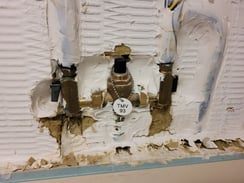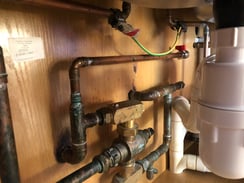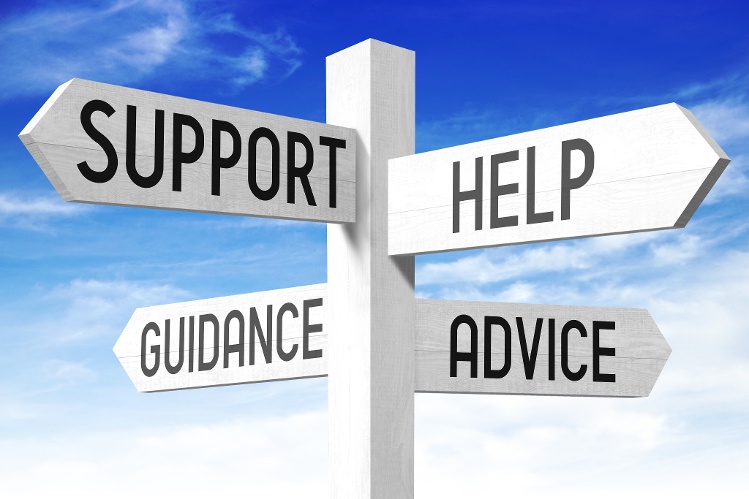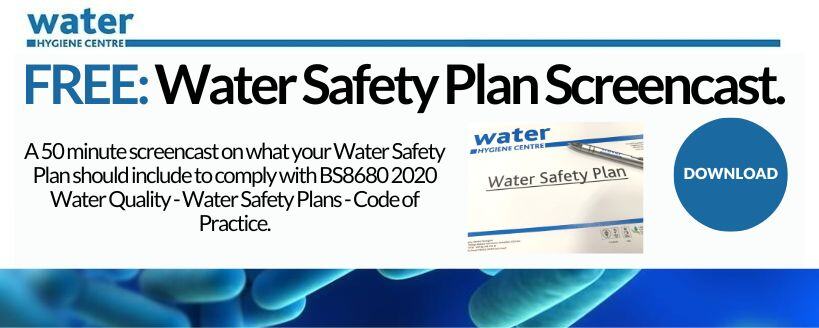Authorising Engineer (AEW) as a Friend: One definition of the word “friend” taken from the Oxford English Dictionary is “a person who is not an enemy or who is on the same side”.
As an AE(W), our goal of “maintaining a safe service” is the same as the organisations we support, and we are therefore “on the same side".

Authorising Engineer (Water) Support
The support provided by an AE(W) will come in the form of both quick fixes and long-term support. This will be in the form of helping to deliver policy & procedures, annual Water Safety Audits, active participation in Water Safety Group meetings, Legionella training, incident investigation, review of Legionella risk assessments, Water Safety Plans & procedures, appraisal of individuals before their appointment to RP/AP, and Projects Design Review for projects.
One example of this invaluable support is something that we have experienced with many organisations. This could be almost any healthcare organisation. The scenario goes like this:
The organisation has a ‘Water Safety Plan', comprising of safe water policy & procedures, up-to-date Legionella risk assessments, schematic drawings, and a scheme of control measures that have been implemented across all of their sites. The scheme appears to be effective at all sites except one. One site repeatedly tests positive for Legionella bacteria despite the usual remedial actions and best intentions.
 As the Authorising Engineer (Water) we would want to support our client in finding the root cause and advise on the appropriate action to take. This would typically involve a site visit, an inspection of the water system, and a review of recent monitoring records for that particular system. Often these are things that bacterial and engineering risk assessments should have picked up but, for whatever reason, have not.
As the Authorising Engineer (Water) we would want to support our client in finding the root cause and advise on the appropriate action to take. This would typically involve a site visit, an inspection of the water system, and a review of recent monitoring records for that particular system. Often these are things that bacterial and engineering risk assessments should have picked up but, for whatever reason, have not.
This may include a review of the current risk assessment as a result of finding evidence that the control scheme is not effective. We’re often told that the AE(W) should not undertake risk assessments, but it is the AE(W) who has the necessary skills and experience to review and unravel the evidence when the standard precautions are ineffective.
Typical Root Causes of Legionella
Problems with Legionella bacteria colonising water systems have a root cause or chain of infection, if you don’t know what it is, it probably means you haven’t found it yet. Investigations prompted by the Authorising Engineer (Water) will often uncover faults such as:
- Poor temperature control,

- Inadequate circulation in hot water return pipework,
- Poor flow rates,
- TMV faults,
- Previously unidentified dead-legs,
- Infrequent use, hidden components such as flexible hoses, partially closed valves etc.
Sometimes speaking to local staff raises questions about system performance, usage patterns, or potential sources of contamination. Human error often plays a part as actual investigations have discovered:
- One of a pair of calorifiers was found to be operating below the target temperature of 60°C due to a failed primary heating system. The other calorifier was compensating for the failure and inadequate monitoring did not detect the temperature deficit leading to water at an incorrect temperature entering the distribution system.
 Extensive and obvious dead-end pipework was found in an office meeting room that had been overlooked by the risk assessor. The block was formerly a ward, and the meeting room was once the bathroom – highlighting the need for risk assessors to consider the history of the building and adapt their survey accordingly.
Extensive and obvious dead-end pipework was found in an office meeting room that had been overlooked by the risk assessor. The block was formerly a ward, and the meeting room was once the bathroom – highlighting the need for risk assessors to consider the history of the building and adapt their survey accordingly.- Flexible hoses were discovered behind IPS panels in a refurbished ward area. On review the hoses had been identified in the previous legionella risk assessment but, contrary to the recommended actions, had not been removed. Managers should ensure that there are processes in place to check that work has been completed satisfactorily and not rely only on computer read-outs.
- In another case, water samples destined for Legionella analysis took up to 7 days to be delivered to the laboratory despite guidelines stating that samples preferably should be delivered to the laboratory within 24 hours and that analysis should commence within a maximum of 72 hours. The outcome of any delay was unreliable results and wasted resources.
In these troublesome and often complex instances, the experience of the Authorising Engineer (Water) combined with the Authorised Person’s knowledge of the site is a powerful force, but even then, it is often the plumber, estates engineer, or the cleaner- the eyes and ears on the ground, who hold the key to uncovering the fault.
There is sometimes tension or mistrust between trades staff and their managers, as an Authorising Engineer (Water) it can help not to take sides and befriend everyone..... but perhaps trust no one entirely! If there’s one thing this shows, it’s that as an AE(W) we often come against poor communication within the organisations we serve.
Authorising Engineer (Water) as a Foe
For all the ways that we aim to help our colleagues, sometimes it may be necessary to lock horns. This can happen in a variety of ways but here are some examples:
- Sometimes it is necessary for an Authorising Engineer (Water) to tell clients home truths about the performance of the service;
- Records are not good enough;
- Candidate not suitable for the role of Authorised Person;
- Maybe the DP is ignoring or playing down the risks when communicating to the board;
- A letter of escalation may be issued, highlighting the areas of concern and suggested actions to rectify.
An Authorising Engineer (Water) can be the bearer of bad news:
- Poor audit report;
- Sample results show system is colonised;
- The system is beyond repair;
- Missing Water Safety Records;
- Expensive actions required;
- In extreme circumstances, an AE (W) may be called upon to be a whistle-blower when organisations are failing.
- Everyone has heard the story of the Emperor’s new clothes… An AE (W) intends to act as a friend and although “friends don’t like to tell” it is sometimes only a true friend who will explain harsh realities. When these circumstances occur, it can be a “bitter pill” and may result in a tense relationship until the situation is fully explained.
In another scenario, an Authorising Engineer (Water) could be considered an enemy if they are not acting impartially, for example when the AE(W) has a vested interest in up-selling services that are not included in their role.
As Authorising Engineers we have a duty and personal and corporate standards to uphold that come with the role to provide an informed view of compliance within the organisation. Professionally, that view must be impartial and accurate to the extent that it won’t always go down well with our friends.
The work of an AE (W) can help clients avoid long-term problems, but it sometimes creates difficulties for individuals & teams in the short term. To help minimise these events AEs should:
- Engage with as many stakeholders as possible through the Water Safety Group and other opportunities;
- Encourage self-sufficiency in their clients – don’t make yourself indispensable for the wrong reasons.
The AE (W), regardless of discipline, is there to support as a ‘friend’ but may be considered a ‘foe’ by some if they don’t like the message you deliver.
Feel free to reach out if you have any questions about this blog or if you would like to consult with one of our experts for further advice on water hygiene.
Editors Note: The information provided in this blog is correct at the date of original publication - August 2019 (Revised March 2024).
© Water Hygiene Centre 2014









